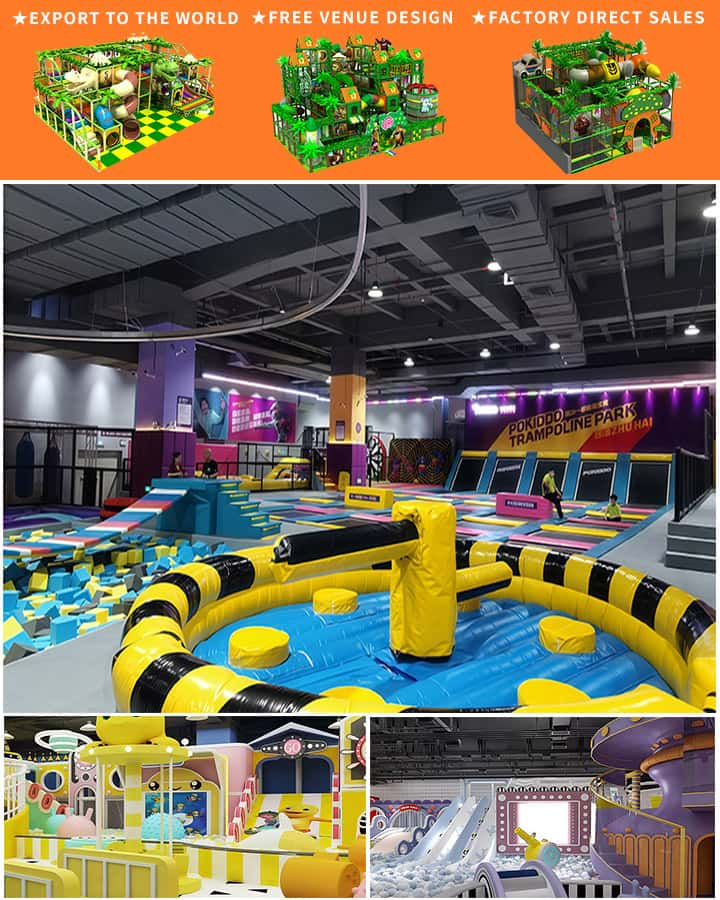Indoor playgrounds are a popular destination for families looking to provide their children with a fun and safe environment to play. These facilities, filled with climbing structures, slides, ball pits, and more, offer endless hours of entertainment for kids of all ages. However, one crucial aspect that parents and guardians need to be aware of is the age limit policy implemented by indoor playgrounds. This article delves into the reasons behind setting age limits at indoor playgrounds and why adhering to these policies ensures a safer and more enjoyable experience for everyone involved.
The Purpose of Age Limits
Age limits at indoor playgrounds serve several essential purposes, primarily revolving around safety and appropriate supervision. Children of different ages have varying physical capabilities and developmental stages, which can impact their ability to navigate playground structures safely. By setting age limits, indoor playgrounds can ensure that the equipment matches the physical and cognitive abilities of the children using it.
Safety Considerations
Safety is the paramount concern in any play environment. Younger children often lack the coordination and strength necessary to use playground equipment designed for older kids, increasing the risk of accidents and injuries. For instance, a toddler may not be able to navigate a climbing wall as safely as an older child, leading to potential falls or collisions. Similarly, teenagers might find some of the playground equipment too simple and could engage in roughhousing, posing a threat to younger visitors.

By establishing age limits, indoor playgrounds create a safer environment where children can enjoy activities tailored to their developmental levels. This segmentation allows for better supervision and reduces the likelihood of injuries due to unsupervised or mismatched play.
Developmental Benefits
Children develop at different rates, and age-appropriate play environments cater to their unique needs. Indoor playgrounds often feature areas specifically designed for various age groups, such as soft play zones for toddlers, larger climbing structures for school-aged children, and interactive games suitable for preteens. These designated spaces help promote physical activity, social interaction, and cognitive development in age-specific ways.
For example, toddlers benefit from activities that enhance their motor skills and sensory exploration, while older children gain confidence and problem-solving abilities through more complex challenges. By adhering to age limits, indoor playgrounds ensure that each child has access to equipment that supports their stage of development.
Supervision and Behavior Management
Another critical reason for implementing age limits is the ease of supervision and behavior management. Smaller, age-specific areas allow staff to monitor children more effectively, ensuring that they follow playground rules and use equipment correctly. This oversight helps prevent reckless behavior and ensures that all children have a positive experience.
Moreover, age-segregated spaces reduce conflicts among children of different ages, as younger kids tend to require more gentle interactions and supervision compared to their older peers. This separation fosters a more harmonious environment where everyone can enjoy their time without feeling overwhelmed or uncomfortable.
Parental Peace of Mind
Parents and guardians also benefit from clear age limit policies. Knowing that an indoor playground enforces age restrictions can provide peace of mind, allowing them to relax and let their children explore and play freely. They can trust that the environment is safe and appropriate for their child’s age, reducing stress and enhancing the overall experience.
Conclusion
Indoor playgrounds set age limits to prioritize safety, cater to developmental needs, facilitate effective supervision, and ensure positive experiences for both children and their guardians. By adhering to these guidelines, families can make the most out of their visits to indoor playgrounds, enjoying hours of fun and creating lasting memories in a secure and age-appropriate setting. Whether you’re planning a visit for your toddler or your preteen, understanding and respecting age limit policies will contribute to a better playtime for all.




